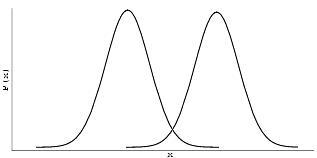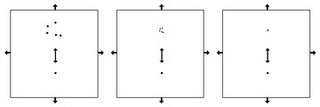existence and non-existence
I believe one stumbling block that persists in physical theory today is the commonly assumed notion of objective existence.
Although the idea of existence sans relationship or interaction is illogical and contrary to all observation and experience, it seems to persist as a default for the basis of a large amount of theory.
This may be due to the assumed alternative: that of a bootstrapped existence. Bootstrapping is the idea that existence arises and persists through a self-sustained closed cycle of interaction.
However, if this is the case, it seems to me that bootstrapping might not be a fair alternative to the idea of objective existence.
I say this because bootstrapping requires non-existence 'outside' of the interaction-cycle to allow for definition of relative existence. In fact, bootstrapping simply moves the apparent contradiction, it does not eliminate it.
In my opinion, it is best to consider existence and non-existence as two sides of the same coin. Rather than resisting the notion of non-existence, and attempting to construct reasonable explanations for our observance of existence, perhaps we should ask whether existence is reasonable without non-existence.
Or, to put it more simply: Perhaps we should consider existence and non-existence to be akin to the notions of hot and cold.
We often speak of hot and cold as if they are opposite entities, however, we know this is not true. Temperature is simply the kinetic energy of molecular motion. Hot and cold are only relative descriptions comparing multiple temperatures.
In fact, when we consider the possibility of an absolute zero state, the notions of hot and cold become meaningless. -We need only to provide the Kelvin to describe an object's temperature.
Thus, I suggest it may be more useful to alter our notion of existence and non-existence so that we do not see it as two relative entities, but rather to understand existence to be a scalable factor.
With this perspective in mind, consider the following assertions:
-It is impossible to discuss existence without employing the notion of interaction.
-Existence may be described as a measure of interaction. Non-existence is therefore only a relative lack of interaction, and thus is a misnomer, or non-entity, similar to 'cold'.
-To speak of a non-interacting particle is meaningless, as it relies on objective existence (1). Therefore to suggest that something must exist in order for it to interact is also meaningless.
To view existence in this way seems satisfying to me. Furthermore, I find it interesting that absolute zero Kelvin may be unattainable. The same might be true of non-existence.
1. Please read the post: matter, space and time.
Although the idea of existence sans relationship or interaction is illogical and contrary to all observation and experience, it seems to persist as a default for the basis of a large amount of theory.
This may be due to the assumed alternative: that of a bootstrapped existence. Bootstrapping is the idea that existence arises and persists through a self-sustained closed cycle of interaction.
However, if this is the case, it seems to me that bootstrapping might not be a fair alternative to the idea of objective existence.
I say this because bootstrapping requires non-existence 'outside' of the interaction-cycle to allow for definition of relative existence. In fact, bootstrapping simply moves the apparent contradiction, it does not eliminate it.
In my opinion, it is best to consider existence and non-existence as two sides of the same coin. Rather than resisting the notion of non-existence, and attempting to construct reasonable explanations for our observance of existence, perhaps we should ask whether existence is reasonable without non-existence.
Or, to put it more simply: Perhaps we should consider existence and non-existence to be akin to the notions of hot and cold.
We often speak of hot and cold as if they are opposite entities, however, we know this is not true. Temperature is simply the kinetic energy of molecular motion. Hot and cold are only relative descriptions comparing multiple temperatures.
In fact, when we consider the possibility of an absolute zero state, the notions of hot and cold become meaningless. -We need only to provide the Kelvin to describe an object's temperature.
Thus, I suggest it may be more useful to alter our notion of existence and non-existence so that we do not see it as two relative entities, but rather to understand existence to be a scalable factor.
With this perspective in mind, consider the following assertions:
-It is impossible to discuss existence without employing the notion of interaction.
-Existence may be described as a measure of interaction. Non-existence is therefore only a relative lack of interaction, and thus is a misnomer, or non-entity, similar to 'cold'.
-To speak of a non-interacting particle is meaningless, as it relies on objective existence (1). Therefore to suggest that something must exist in order for it to interact is also meaningless.
To view existence in this way seems satisfying to me. Furthermore, I find it interesting that absolute zero Kelvin may be unattainable. The same might be true of non-existence.
1. Please read the post: matter, space and time.





